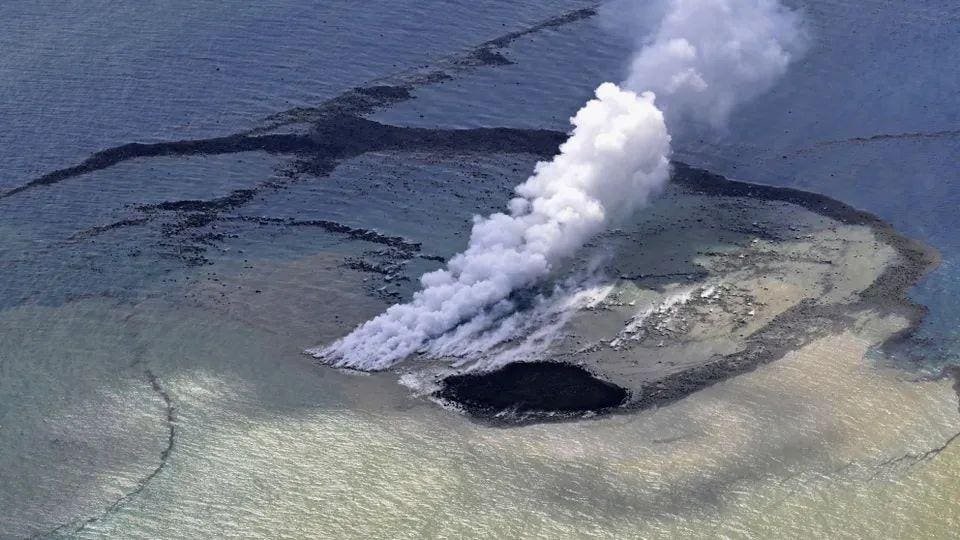An unnamed island located about 1 kilometer (half a mile) off the southern coast of Iōtō Island in the western Pacific is the newest addition to the over 14,000 islands comprising the Japanese archipelago.
The new island is the result of volcanic activity of an undersea volcano that started erupting in October. By early November, enough pumice and tuff had accumulated in the shallow sea to form a scoria cone about 100 meters (328 feet) in diameter and as high as 20 meters (66 feet), so Yuji Usui, an analyst in the Japan Meteorological Agency’s volcanic division, in a statement made to AP.
Volcanic activity at the site has since subsided, with waves quickly eroding large parts of the new land. Without lava flows, forming a hard protective crust over the soft volcanic debris, the fate of this new land mass remains uncertain. Similar islands formed in 1904, 1914 and 1986 but quickly disappeared after volcanic activity ceased completely. An island formed in 2021 is still visible on the surface as moderate volcanic activity keeps up with the relentless erosion by waves and marine currents.
Of about 1,500 volcanoes active on land, 111 are found in Japan. The volcanic activity is linked to the subduction of the e Pacific beneath the Philippine Plate. As the Pacific Plate sinks into Earth’s mantle, it partially melts, fueling volcanic eruptions on the surface.
The volcanic origin of the entire area, including Iōtō Island or Iwo Jima — meaning “Sulfur Island” as sulfur for industrial use is mined here—played a role during World War II when it was a Japanese stronghold in the Pacific Ocean.
In January 1945, Admiral Chester W. Nimitz realized that he had to overcome this obstacle to get access to the Japanese mainland. But he faced a problem. Volcanic ash naturally contains the minerals that give strength to concrete. Japanese troops stationed on Iwo Jima mixed the volcanic ash and sand found everywhere on the slopes of Suribachi, the largest volcano on the island, into the concrete, creating an excellent building material for bomb-proof bunkers. Bombardment by planes or shelling from battleships would not be sufficient to overcome the Japanese defense, forcing Nimitz to try a full frontal attack. The battle of Iwo Jima in February-March 1945 was one of the bloodiest fights in the Pacific War.
Read the full article here





